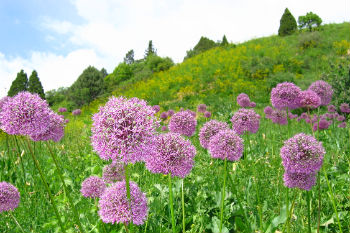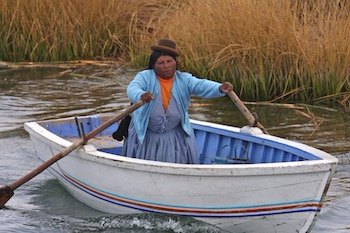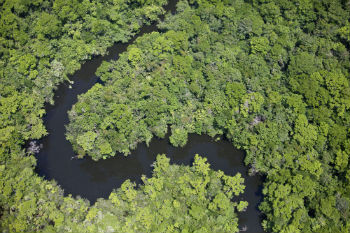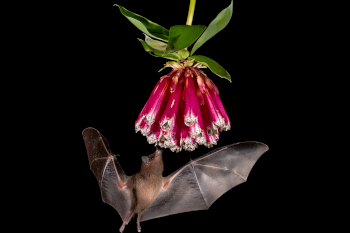Main menu
CEPF is a joint initiative of l’Agence Française de Développement, Conservation International, the European Union, Fondation Hans Wilsdorf, the Global Environment Facility, the Government of Canada, the Government of Japan and the World Bank. A fundamental goal is to ensure civil society is engaged in biodiversity conservation.
Visitez le site français コア情報の日本語翻訳を読むOr use Google Translate to translate the English site to your language:
GTranslate
Earth Day Biodiversity Quiz
By: Nandini Ajmera and Marsea Nelson
21 April 2017
21 April 2017
1. This is the percentage of Madagascar’s plant species found nowhere else on Earth.
A. 60%
B. 70%
C. 80%
D. 90%
2. To qualify as one of the world’s biodiversity hotspots, a region must contain at least 1,500 endemic species of vascular plants and have lost at least 70 percent of its original habitat.
A. True
B. False
3. The only primate species found in the Mediterranean Basin Biodiversity Hotspot is:
A. Barbary macaque (Macaca sylvanus)
B. Preuss’s red colobus (Procolobus preussi)
C. Drill (Mandrillus leucophaeus)
D. Pallid needle-clawed galago (Euoticus pallidus)
4. The Horn of Africa Hotspot’s highest levels of endemism—unique species found nowhere else—occur among what type of vertebrates?
A. Birds
B. Reptiles
C. Mammals
D. Amphibians
5. The ecosystem services provided to humans by the biodiversity hotspots (e.g., water, food and medicine) have been valued at approximately ____ U.S. dollars per year.
A. 1.6 billion
B. 16 billion
C. 160 billion
D 1.6 trillion
6. The Cerrado Hotspot—one of the largest and biologically richest tropical savanna regions in the world—is found primarily in which country?
A. Mexico
B. Costa Rica
C. Brazil
D. Venezuela
7. The saola (Pseudoryx nghetinhensis), a forest-dwelling, hoofed animal found in the Indo-Burma Hotspot, is notable because it:
A. Was only first discovered in 1992.
B. Has no captive population.
C. Is one of the rarest species on the planet.
D. All of the above.
8. Approximately how many people live within the 36 biodiversity hotspots?
A. 65 million
B. 880 million
C. 2 billion
D. 7 billion
9. Which of the following countries has only 2 percent of its original forest cover remaining?
A. Sierra Leone
B. Haiti
C. Laos
D. Philippines
10. The most recently declared biodiversity hotspot is:
A. North American Coastal Plain
B. Forests of East Australia
C. Caribbean Islands
D. Mountains of Central Asia
Answers
1. D: 90%
Madagascar is famous for its diversity of lemurs and chameleons, but it’s also home to a stunning diversity of plants.
2. A: True
Many of the biodiversity hotspots exceed these criteria. For example, the Tropical Andes Hotspot has about 15,000 endemic plant species, well above the required 1,500.
3. A: Barbary macaque
The Endangered Barbary macaque lives in the Mediterranean Basin Hotspot. The other three species are found in the Guinean Forests of West Africa Hotspot.
4. B: Reptiles
The Horn of Africa holds more endemic reptiles than any other region in Africa.
5. D: $1.6 trillion
The hotspots provide crucial ecosystem services for human life, including clean water, pollination and climate regulation.
6. C. Brazil
More than 99 percent of the Cerrado Hotspot lies within Brazil. The remainder is found in neighboring countries Bolivia nad Paraguay.
7. D: All of the above
The saola is listed as Critically Endangered on the IUCN Red List. CEPF grantees and others are working to protect the species.
8. C: 2 billion
The 36 biodiversity hotspots are home to about 2 billion people, including some of the world's poorest, many of whom rely directly on healthy ecosystems for their livelihoods and well-being.
9. B: Haiti
This mass deforestation has exacerbated problems of poverty, malnutrition and disease in Haiti by causing soil degradation, erosion, flooding, degraded water quality, increased pressure on wildlife and increasing reliance on unsustainable resource-gathering by local communities. It also makes the country more vulnerable to the impacts of climate change.
10. A: North American Coastal Plain
In 2016, the North American Coastal Plain—which stretches from northern Mexico to southern Maine, runs along the coast and includes areas within major U.S. cities, most notably New York City and Washington, D.C.—was declared a biodiversity hotspot.





